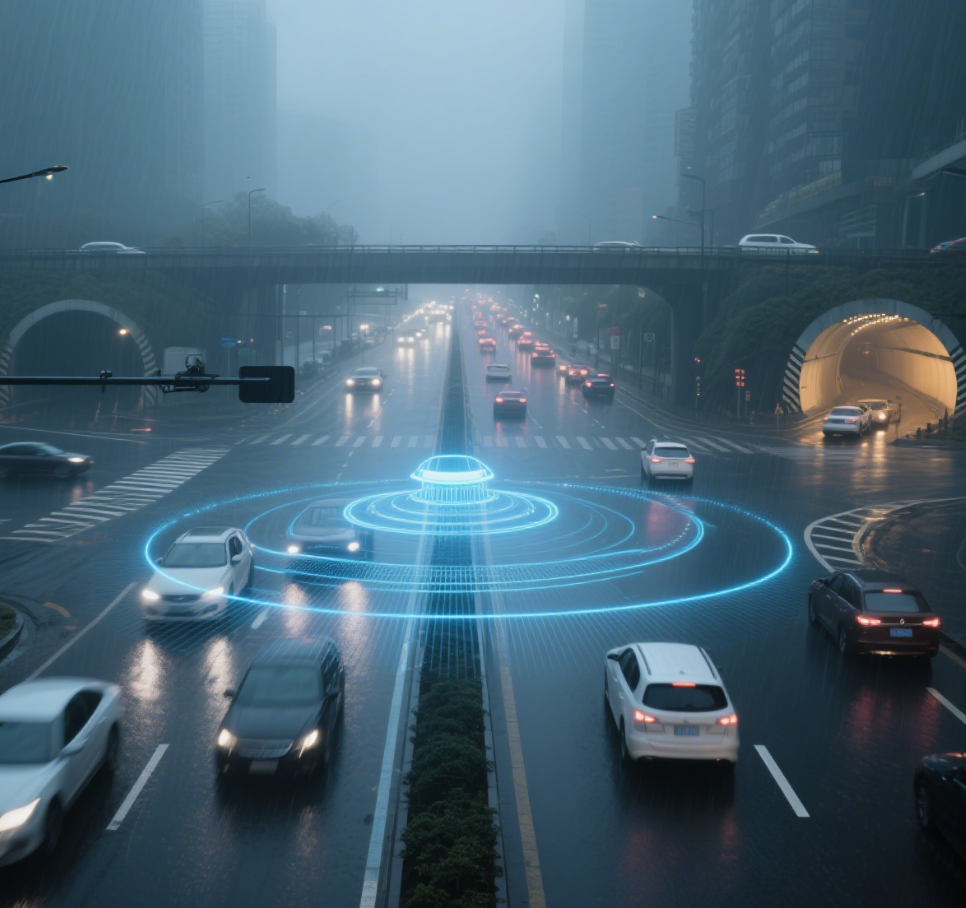When discussing millimeter-wave (mmWave) radar in traffic monitoring, one technical factor often decides whether the system works reliably in real-world conditions: angular resolution. This parameter defines the radar’s ability to distinguish between objects that are close together in angle. In practical terms, it determines whether the radar can separate two vehicles driving side by side or detect a pedestrian walking near a car.
What Is Angular Resolution in Radar?
Angular resolution describes the minimum angle between two targets that a radar can separate. A smaller angular resolution value means the radar can detect objects that are closer together.
-
According to Wikipedia’s definition, this concept is not unique to radar but applies to optics and radio astronomy as well.
-
In the context of traffic monitoring, it directly influences how clearly a radar perceives vehicles, cyclists, and pedestrians.
Why It Matters for Traffic Monitoring
Traffic environments are crowded and dynamic. Vehicles change lanes, pedestrians cross roads, and bicycles move unpredictably. Without strong angular resolution, radars may treat two objects as one, creating blind spots or false detections.
For example:
-
Lane-Level Detection: Linpowave’s V200 Traffic Radar leverages high angular resolution to distinguish vehicles in adjacent lanes within a range of 0.4–200 meters.
-
Pedestrian Safety: Accurate angular resolution ensures that a pedestrian walking near a car is not mistaken as part of the vehicle, which is crucial for intelligent crosswalk monitoring.
-
Complex Intersections: In urban junctions, multiple objects appear within a narrow angle. IEEE research highlights that advanced antenna design and MIMO techniques improve resolution, making radars more reliable in such scenarios.
The Technology Behind Angular Resolution
Angular resolution depends on several factors:
-
Antenna Aperture Size – Larger apertures allow finer resolution.
-
Operating Frequency – Higher frequencies (like 77–81 GHz) enable smaller beamwidths.
-
MIMO Configurations – Multi-input multi-output (MIMO) systems, used in Linpowave radar technology, simulate larger virtual arrays to achieve finer angular discrimination.
This is why Linpowave designs its radar modules with compact but powerful arrays, ensuring both integration flexibility and high performance.
Applications in Smart Traffic Systems
High angular resolution enables mmWave radar to address specific challenges in traffic:
-
Adaptive Traffic Lights – Radar can detect multiple waiting lanes of vehicles, optimizing signal control.
-
Pedestrian Monitoring – Clear separation helps in intelligent crosswalk safety systems.
-
Incident Detection – Precise object tracking reduces false alarms in tunnel or highway monitoring.
For cities investing in smart infrastructure, ITS International reports that reliable sensing technologies like mmWave radar are essential for next-generation traffic management.
Conclusion
Angular resolution is more than a technical metric—it is the foundation of accurate and reliable traffic monitoring with mmWave radar. Whether it’s lane-level detection, pedestrian safety, or adaptive traffic control, higher angular resolution translates directly into safer and smarter roads.
Linpowave’s traffic solutions, including the V200 Traffic Radar and system-level applications, are built with this principle in mind: delivering high-resolution sensing that cities can trust for the future of intelligent transportation.



